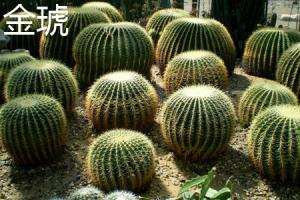Introduction
Deserts are known for their hostile living conditions; hot and dry climate, scarce water resources, and a limited variety of plants and wildlife. Despite these harsh realities, many countries in the world have planted palm trees in the desert. The question that arises is why do people plant palm trees in the desert? This article sheds light on the reasons behind this practice.
Historical Significance
Palms have been an essential part of human culture since ancient times. In regions like the Middle East and North Africa, palm trees have been cultivated for centuries for their valuable fruits, such as dates, and their leaves, which have been used to make baskets and mats. Therefore, planting palm trees in the desert is seen as a cultural practice that was handed down for generations. It represents a way of preserving tradition and connecting with the past.
Environmental Benefits
Planting palm trees in the desert has a positive impact on the environment. Firstly, palm trees are known for their ability to survive in tough and arid conditions. By planting palm trees in the desert, we are sustaining the ecosystem and preventing desertification. Secondly, palm trees produce good quality air, which is beneficial for people living in the desert. Thirdly, the soil around the palm tree is rich in nutrients, attracting wildlife, which ultimately boosts the biodiversity of the surrounding areas.
Aesthetics and Recreation
The beauty and elegance of palm trees cannot be denied. Palm trees add aesthetic value to the landscape and provide a relaxing and serene atmosphere to people visiting the desert. Palm trees also serve as a recreational spot in urban areas, attracting tourists that come to enjoy the pleasant environment around the palm trees. Thus planting palm trees in the desert, provides a beautiful and attracting sight for tourists and acts as a means of economic growth for communities living in the desert areas.
Economic Value
The economic value of planting palm trees in the desert is noteworthy. As mentioned earlier, palm trees produce fruits like dates, which are a valuable cash crop. Date palms are known for their resilience and the ability to thrive in desert conditions, and can produce up to 100 lbs of fruit per tree every year. Trading in date crops is known to bring in significant income for communities living in the deserts around the world. Planting palm trees also increases the value of desert property, as it makes the area more beautiful and attractive for commercial investment opportunities.
Conclusion
Planting palm trees in the desert may seem like an inconceivable idea at first. However, as discussed in this article, there are several advantages associated with this practice. From preserving culture to providing environmental benefits, and aiding in economic growth, planting palm trees has become a valuable practice. Palm trees offer a sustainable and effective solution for living in the desert, making life in the harsh conditions of the desert more bearable and even enjoyable.

 how many times do yo...
how many times do yo... how many planted tre...
how many planted tre... how many pine trees ...
how many pine trees ... how many pecan trees...
how many pecan trees... how many plants comp...
how many plants comp... how many plants can ...
how many plants can ... how many plants and ...
how many plants and ... how many pepper plan...
how many pepper plan...

































